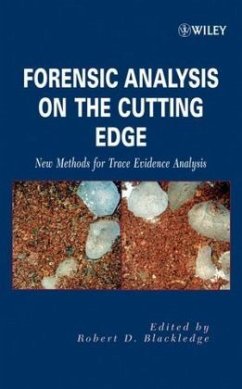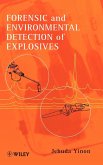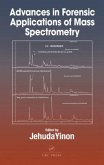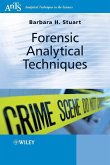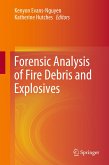This title brings forensic scientists and chemists up-to-date on the latest instrumental methods for analysing trace evidence, including mass spectrometry, image analysis, DIOS-MS, ELISA characterization, statistical validation, and others. Illustrates comparative analysis of trace evidence by both old and new methods. Explains why some newer methods are superior to older, established methods. Includes chapters on analysis of DNA, ink, dyes, glitter, gun powder traces, condom trace evidence, footwear impressions, toolmark impressions, surveillance videos, glass particles, and dirt. Discusses applications such as mass spectrometry, image analysis, desorption-ionization on silicon mass spectrometry (DIOS-MS), ELISA characterization, and statisticalvalidation.
An in-depth exploration of the latest methodologies, tools, and techniques for analyzing trace evidence
With chapters written by scientists who are acknowledged leaders in their specialty areas, this resource provides real-world, up-to-date information on state-of-the-art technologies in the analysis of trace evidence. Such evidence often provides proof of an association between a suspect and a victim or crime scene. With numerous case histories, this reference illustrates the analysis of evidence by both traditional and new methods. Forensic Analysis on the Cutting Edge covers:
_
A wide range of methodologies, including mass spectrometry, Fourier transform infrared microspectroscopy, Raman microspectroscopy, statistical validation, and others
_
The analysis of ink, condom trace evidence, glitter, fibers, glass cuts, pressure sensitive tapes, automotive airbag contact, and more
_
Chemical detection strategies for latent invisible trace evidence, including blood stains, fingerprints, and pepper spray
_
The application of cathodoluminescense to forensic examinations
With its detailed explanations and practical examples, this will be a valuable hands-on reference for scientists in forensic laboratories worldwide. It will also be an informative, fascinating resource for mystery writers, attorneys, criminal investigators, and others who want to go beyond the basics of trace evidence analysis.
Hinweis: Dieser Artikel kann nur an eine deutsche Lieferadresse ausgeliefert werden.
An in-depth exploration of the latest methodologies, tools, and techniques for analyzing trace evidence
With chapters written by scientists who are acknowledged leaders in their specialty areas, this resource provides real-world, up-to-date information on state-of-the-art technologies in the analysis of trace evidence. Such evidence often provides proof of an association between a suspect and a victim or crime scene. With numerous case histories, this reference illustrates the analysis of evidence by both traditional and new methods. Forensic Analysis on the Cutting Edge covers:
_
A wide range of methodologies, including mass spectrometry, Fourier transform infrared microspectroscopy, Raman microspectroscopy, statistical validation, and others
_
The analysis of ink, condom trace evidence, glitter, fibers, glass cuts, pressure sensitive tapes, automotive airbag contact, and more
_
Chemical detection strategies for latent invisible trace evidence, including blood stains, fingerprints, and pepper spray
_
The application of cathodoluminescense to forensic examinations
With its detailed explanations and practical examples, this will be a valuable hands-on reference for scientists in forensic laboratories worldwide. It will also be an informative, fascinating resource for mystery writers, attorneys, criminal investigators, and others who want to go beyond the basics of trace evidence analysis.
Hinweis: Dieser Artikel kann nur an eine deutsche Lieferadresse ausgeliefert werden.
"Overall, this handbook can be recommended to all analysts working in the field of forensic sciences, particularly since the price is acceptable." (J Am Soc Mass Spectrom, 2011)
"Forensic Analysis on the Cutting Edge is an engaging book and accessible to al bachelors-levels scientists and above. I would recommend it to those practicing in the field, to analytical scientists possibly to science-oriented mystery writers who want to write sensibly about one of the unusual pieces of trace evidence covered by Blackledge and his contributors. The book certainly deserves a place on the reference shelf in university libraries." ( Applied Spectroscopy , April 2008)
"This book will be most useful to practicing forensic scientists (criminalists) engaged in trace-evidence analysis and to university students." ( International Journal of Environmental and Analytical Chemistry , 2008)
"Forensic Analysis on the Cutting Edge is an engaging book and accessible to al bachelors-levels scientists and above. I would recommend it to those practicing in the field, to analytical scientists possibly to science-oriented mystery writers who want to write sensibly about one of the unusual pieces of trace evidence covered by Blackledge and his contributors. The book certainly deserves a place on the reference shelf in university libraries." ( Applied Spectroscopy , April 2008)
"This book will be most useful to practicing forensic scientists (criminalists) engaged in trace-evidence analysis and to university students." ( International Journal of Environmental and Analytical Chemistry , 2008)
